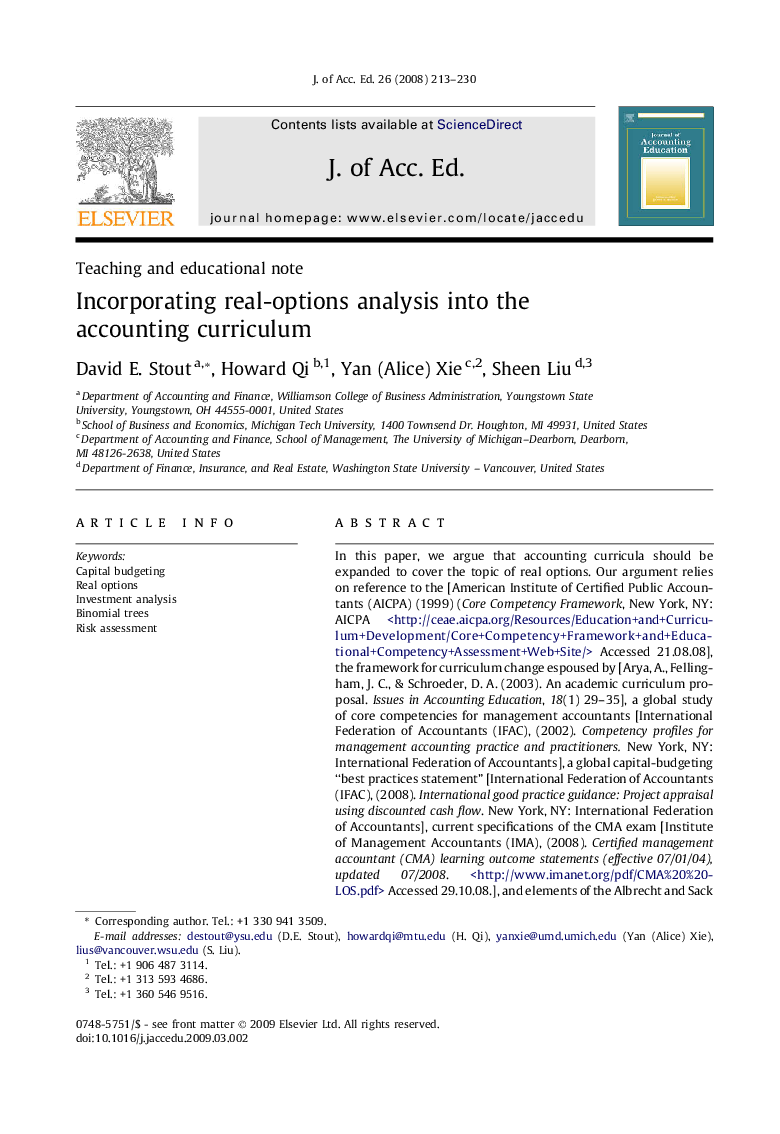| Article ID | Journal | Published Year | Pages | File Type |
|---|---|---|---|---|
| 359540 | Journal of Accounting Education | 2008 | 18 Pages |
In this paper, we argue that accounting curricula should be expanded to cover the topic of real options. Our argument relies on reference to the [American Institute of Certified Public Accountants (AICPA) (1999) (Core Competency Framework, New York, NY: AICPA
